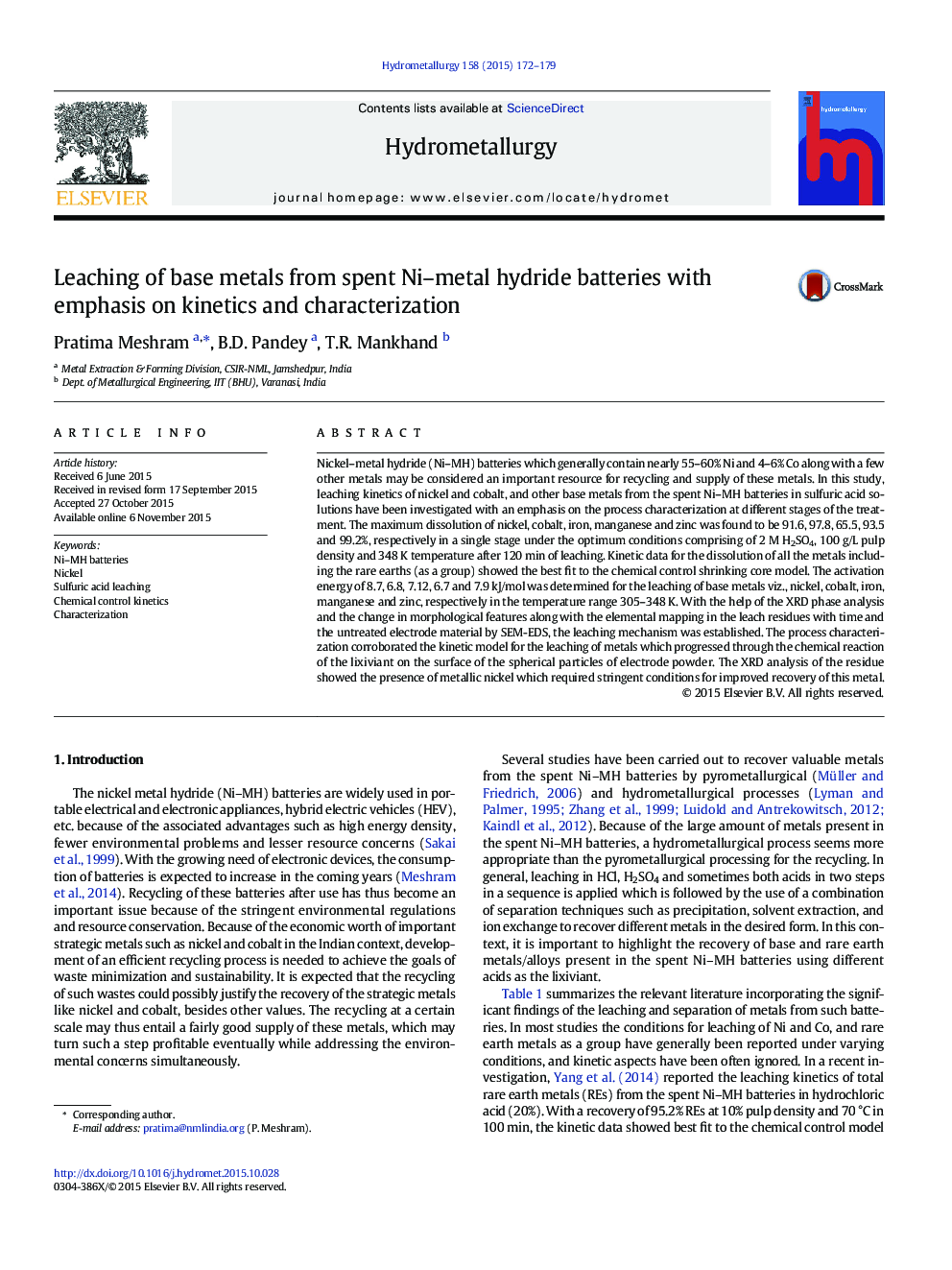| کد مقاله | کد نشریه | سال انتشار | مقاله انگلیسی | نسخه تمام متن |
|---|---|---|---|---|
| 211985 | 462027 | 2015 | 8 صفحه PDF | دانلود رایگان |
• Studied H2SO4 leaching of metals from electrode material of spent Ni–MH batteries
• Most suitable conditions: 2 M H2SO4, 100 g/L pulp density, 348 K, and 120 min
• Achieved leach recoveries of 91.6% Ni, 97.8% Co, 65.5% Fe, 93.5% Mn & 99.2% Zn
• Leaching kinetics followed chemical control shrinking core model.
• Process characterization confirmed surface reaction controlled leaching mechanism.
Nickel–metal hydride (Ni–MH) batteries which generally contain nearly 55–60% Ni and 4–6% Co along with a few other metals may be considered an important resource for recycling and supply of these metals. In this study, leaching kinetics of nickel and cobalt, and other base metals from the spent Ni–MH batteries in sulfuric acid solutions have been investigated with an emphasis on the process characterization at different stages of the treatment. The maximum dissolution of nickel, cobalt, iron, manganese and zinc was found to be 91.6, 97.8, 65.5, 93.5 and 99.2%, respectively in a single stage under the optimum conditions comprising of 2 M H2SO4, 100 g/L pulp density and 348 K temperature after 120 min of leaching. Kinetic data for the dissolution of all the metals including the rare earths (as a group) showed the best fit to the chemical control shrinking core model. The activation energy of 8.7, 6.8, 7.12, 6.7 and 7.9 kJ/mol was determined for the leaching of base metals viz., nickel, cobalt, iron, manganese and zinc, respectively in the temperature range 305–348 K. With the help of the XRD phase analysis and the change in morphological features along with the elemental mapping in the leach residues with time and the untreated electrode material by SEM-EDS, the leaching mechanism was established. The process characterization corroborated the kinetic model for the leaching of metals which progressed through the chemical reaction of the lixiviant on the surface of the spherical particles of electrode powder. The XRD analysis of the residue showed the presence of metallic nickel which required stringent conditions for improved recovery of this metal.
Figure optionsDownload as PowerPoint slide
Journal: Hydrometallurgy - Volume 158, December 2015, Pages 172–179
